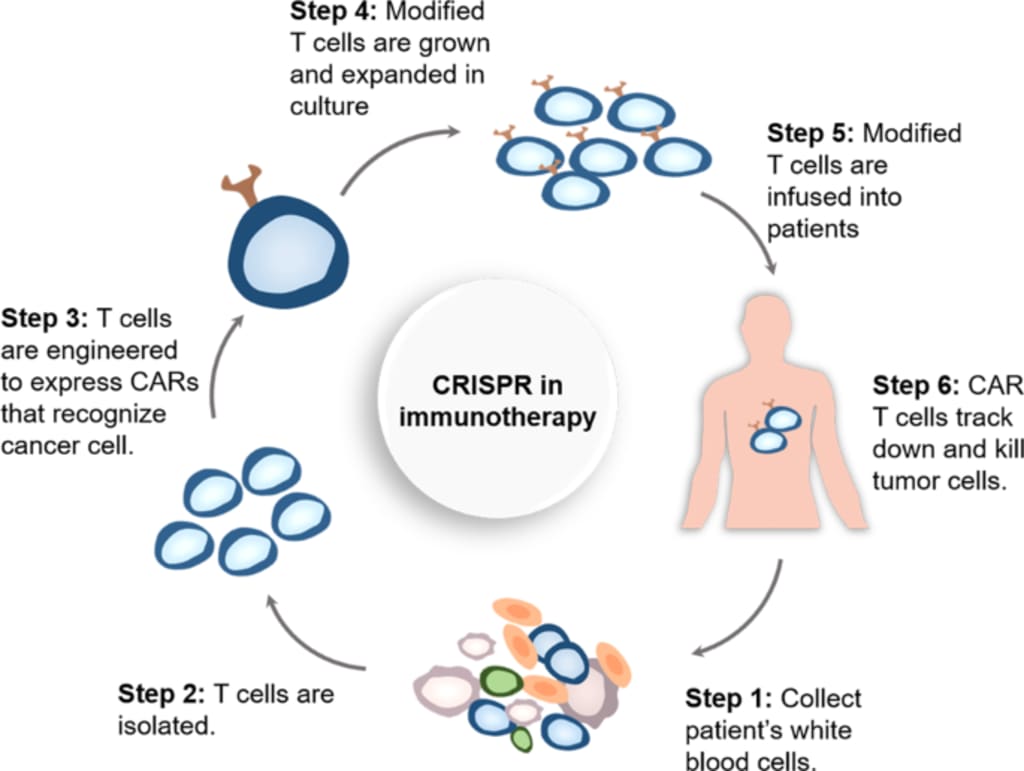Genome editing-Greatest human Discovery
Genome editing-Greatest human Discovery

Advanced genetic engineering technology is a molecular tool called CRISPR / Cas9, a powerful technology discovered by American scientist Jennifer Doudna and French scientist Emmanuelle Charpentier and her colleagues in 2012 and developed by another American scientist, Feng Zhang, and colleagues. In good studies demonstrating its bacterial activity, researchers have found Cas9's ability to direct enzymes that break down DNA in genetic engineering. Jin-Soo Kim, a genome engineer at the Institute for Basic Science in Daejeon, South Korea, is one of the first to become familiar with CRISPR genetic engineering and says he was so excited about the Nobel Prize that he was surprised that biochemist Dana Carroll of the University of Utah in Salt Lake City ignored.
The three-year-old CRISPR / Cas9 method is very effective in cutting and adding genes that researchers have used in their laboratories around the world. In less than a decade, researchers have used CRISPR / CAS9 to develop genetically modified plants, insect-generating models, and human experimental treatment. Scientific advances came as scientists adapted the CRIS-PrEP system to be used for genetic testing, not just a genetic sequence.
In 2012, a team of researchers led by Jennifer Doudna and Emmanuelle Charpentier published a colorful paper that provided scientists with a genetic engineering tool called CRISPR / Cas9 that made it easier than ever to translate genetic engineering. Since then, scientists have developed genetic therapies or genetic engineering to prevent or treat diseases in humans. The genetic engineering of CRISPR-Cas9 has changed the way scientists do research.
Genetic engineering, also known as genetic engineering, is a group of technologies that allow scientists to modify the body's DNA. Gene editing techniques include DNA-cutting proteins such as those of CRISPR-Cas9, activator-like effector nuclease, and Talens zinc finger nucleus. Genome sequencing is performed by enzymes or nucleases designed to identify specific DNA sequences; these enzymes are inserted to cut DNA strands, which allow for the removal of existing DNA or the insertion or restoration of DNA.
In early 2013, Zhang's team modified the CRISPR / Cas9 system in a scientific paper to create specific genes for human cells and mice. Scientists have not only used CRISPR to treat a one-year-old child in the UK called Layla, but also a genome-design technology called Talen. While bacteria use CRISTA and Cas9 to inject DNA fragments from viral genes to prevent infection, scientists have used them to enter eukaryotic genomes to classify genes.
In June 2012, a small group of Doudna and Charpentier presented a keynote address showing how you can turn a new genetic code into a random programming tool that can cut DNA strands, at least from a test tube. In full agreement with the first research paper published by a group of Chinese scientists, it was the first time that human embryos were given precise genetic management. Scientists needed to see how the system affects the genome of human cells.
Recently, George Church at Harvard Medical School used CRISPR / Cas9 to make pigs human by transforming the genes of 62 pigs into genes that are implanted in humans. A new genetic program has also been discovered in microbes, organisms that use it as a means of identifying and cutting DNA into invading bacteria. Researchers suspect that bacteria can capture other proteins that regulate genetic engineering and that this diversity may seem to be important in further refining the precision and technology of genetic engineering.
The discovery of the CRISPR / Cas9 program has encouraged the scientific community to deal more effectively with the deep-rooted behavioral problems associated with the ability to mutate human genes. A Chinese researcher led a conference in April in which he announced that he would use genetic engineering to work on the genes of inactive human embryos that would not develop into babies. With the introduction of simple and effective genetic engineering technologies such as CRISPR-Cas9, many questions, such as whether genetic technology can be used to treat human diseases and alter aspects such as beauty and intelligence, are no longer theories. The answers to these questions have far-reaching effects on medicine and society.
This controversy has been fueled by a technology of innovation developed in recent years called CRISPR / Cas9, which allows scientists to decompose or insert other DNA fragments into bacteria and humans. Investigators can reduce or eliminate unintentional genetic mutations by using the anti-CRISPR protein that closes the CRISPR-Cas9 system before the intended genetic eradication. There are ethical concerns about genetic engineering or the use of technology such as CRISPR / Cas9 that could alter a person's genetic makeup.
The details of genetic management may seem complicated to the general public, but scientists point to the simplicity of CRISPR / Cas9 as a tool that makes genetic exploitation available to researchers around the world in a variety of fields. The safety of anti-CRISPR protein allows researchers to learn how careful genetic planning can be used to improve people's lives.
According to the HGE Registry of the World Health Organization, 115 clinical trials with human planning (HGE) technology have been conducted since October 2020, including common genetic diseases such as sickle cell disease and beta-thalassemia.
One of the distinctive features of this genetic program is the simplicity and flexibility of the CRISPR / Cas9 genre, with the addition of Francis Collins, geneticist, and director of the US National Institutes of Health in Bethesda, Maryland. With CRISpr's powerful new genetic engineering technology, scientists can make changes in days, weeks, or even months. It is not far-fetched to believe that one day we can be sure that CRISPLs are safe, and we can use this technology to genetically modify human disease, select sports, or choose higher intelligence.





Comments
There are no comments for this story
Be the first to respond and start the conversation.